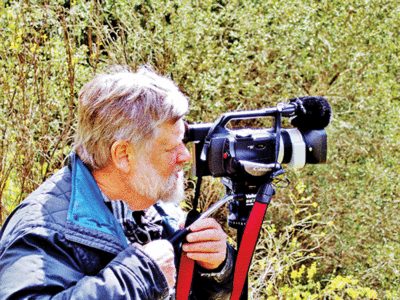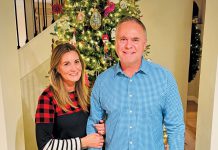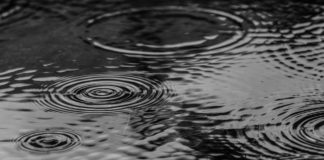
“Eventually, all things merge into one, and a river runs through it. The river was cut by the world’s great flood and runs over rocks from the basement of time. On some of the rocks are timeless raindrops. Under the rocks are the words, and some of the words are theirs. I am haunted by waters.”
Norman Maclean, “A River Runs Through It and Other Stories”
The river is born in the rain-formed tafoni sculptures revealed in sandstone outcroppings on a ridge in the Santa Cruz Mountains. Byzantine veins of waters collapse together to create the San Lorenzo River as it powers its 30 mile trip to the Pacific, picking up tributaries along the way.
From the water’s humble beginning of seeps, springs, and seasonal streams, the river swells to a capacity that provides the main water source for the citizens of the City of Santa Cruz and the San Lorenzo Valley.
Although the river historically flooded the City of Santa Cruz during heavy rain falls in winter, by 1955 officials decided to take the “wild” out of the lower San Lorenzo, demanding flood control measures from the U.S. Army Corps of Engineers.
A straight channel tamed the river’s meandering ways, all vegetation was pulled out, levees were installed, and the San Lorenzo River became a concrete ditch in Santa Cruz, like the Los Angeles aqueduct. Gone was the inviting riparian forest alive with seasonal steelhead and salmon runnings.
“Now Henry Cowell Redwoods State Park has the only riparian corridor left in the county,” says Fred McPherson, the river’s lodestar in the San Lorenzo Valley. “All the area along the river in Cowell is referred to as a black cottonwood, white alder riparian forest.”
“Much of the Lower San Lorenzo River into Santa Cruz looked like it at one time, along with Soquel Creek,” says the recently retired board member of the San Lorenzo Valley Water District. “Once most rivers throughout Monterey Bay had big riparian forests. But this is the biggest chunk left. That’s what makes it so unique.”
Why does McPherson care so much about the river? “I grew up on and in the Kern River and was healed by the river as a sick child. There was something so inspiring; I had a personal connection.”
When he moved to area in 1967, he saw how the river in Santa Cruz had been devastated — altered and channelized. So I wanted to leave a heritage my family and other kids could enjoy as much as I did.”
McPherson will lead a riparian river walk on August 10.
“I would like people to know that we do have a river,” he said. “Many people don’t go down to the river; they don’t see it; they don’t acknowledge it. Some people do. I’d like for people to know the characteristics of the river — the ecological community of the river and the riparian forest.”
On the walk, he will show how river hydrology should work with bends, riparian forests, and a corridor that used to run along the rivers in Santa Cruz and Soquel, protecting fish from dehydration and predation.
“The river has been subjected to at least 100 years of industrialized civilization — logging, lime, and urbanization have impacted it greatly. Through much of the river’s history it has been thought of as a dump, a way to get rid of sewage, dead carcasses, and sawdust.”
What is a riparian forest and why is it needed?
As the river flows downstream, it fills with sediment, sand, gravel, silt, and clay and begins to bottom out and sometimes flood in places like Cowell State Park. The plants that can survive at the river’s edge must adapt to changing soils that sometimes cover or wash over them, creating a riparian forest. The rare ecosystem naturally controls flooding, intercepts pollution, recycles and produces oxygen.
Although the river at this spot has a dam, it’s a diversion, inflatable rubber dam. In the rainy season, water is diverted to Loch Lomond or sometimes pumped directly to a treatment plant. During droughts, like we are experiencing now, conflicts arise concerning who or what gets the water.
McPherson is an educator.
“Now I’m a new kind of teacher, a documentarian chronicling natural history using video with the new digital technology to do that.”
He shoots and his wife Roberta narrates such productions as “The Natural Wonders of Henry Cowell Redwoods State Park,” which is available at the Cowell Nature Store.
McPherson and I will lead the Saturday morning walk on August 10 at Henry Cowell Redwoods State Park. The walk is free and sponsored by an environmental education grant from the San Lorenzo Valley Water District. For more information, contact me at ca****@*********on.com.
– Carol Carson, M.Ed., is a naturalist, writer, and educator.












